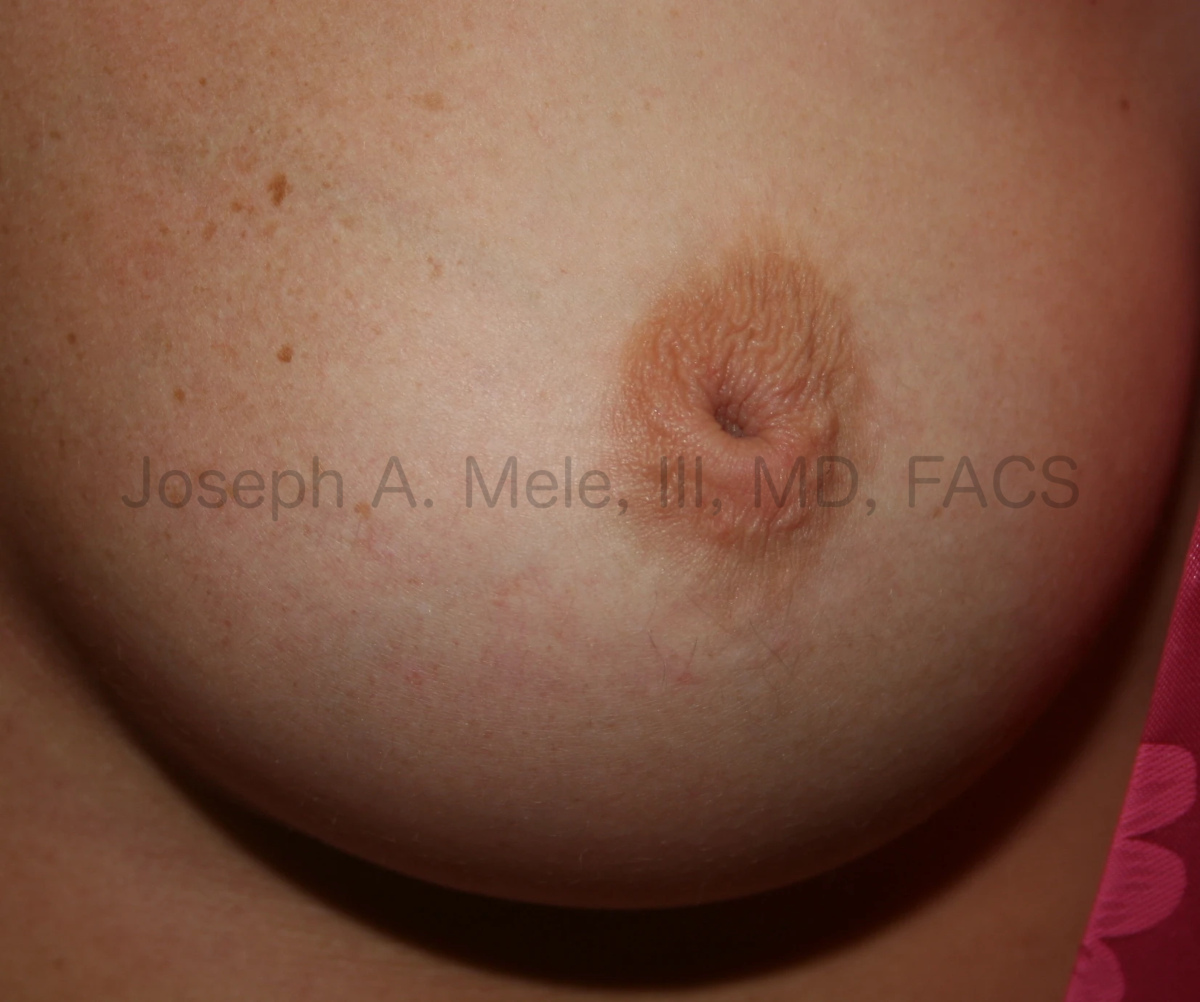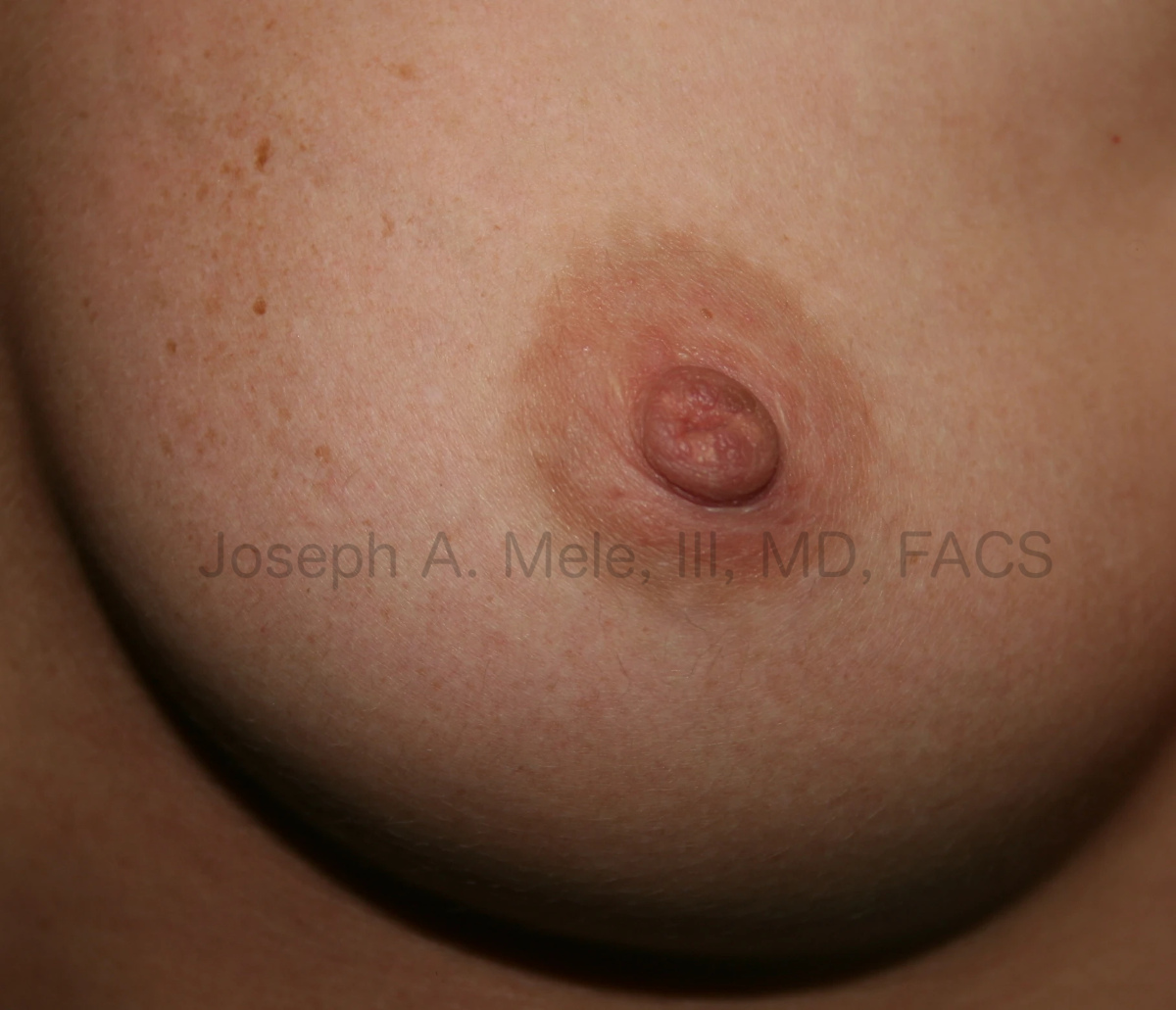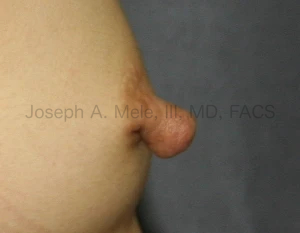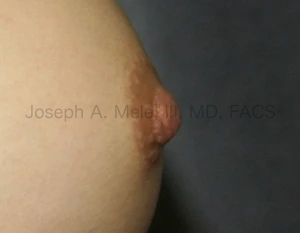Breast asymmetry is more the rule than the exception, and there are many ways in which breasts can be uneven. Size, shape and location all come into play. Asymmetry may effect the entire breast mound (see previous post) or just the nipples. Normally, the differences are small; however, as the magnitude of breast asymmetry increases, so does the desire for correction.
In my San Francisco Bay Area (Walnut Creek) cosmetic plastic surgery practice, I measure the differences between the breasts both subjectively and objectively every day. Small differences frequently go unnoticed. Often, asymmetry is first noted in the consultation for breast augmentation. When the difference is obvious, however, breast asymmetry can be the driving force toward seeking consultation with a Board Certified Plastic Surgeon.
This post is focussed primarily on areola asymmetry (the darker skin around the nipple) and nipple asymmetry (the raised part in the middle). Look for a post on breast asymmetry (the breast mound itself), including breast implant asymmetry, in the very near future.
One of the most common nipple asymmetries is caused by inversion (retraction) of the nipples. Inverted nipples can occur on one or both sides. Inverted nipples and even bifid (split or duplicated) nipples can be treated with minor surgery.

Inverted nipple before correction – This nipple is completely inverted.
Inverted nipples are caused by short mammary ducts that pull the nipple inside the breast tissue. In the most pronounced forms even the areola maybe hidden. The scar for inverted nipple correction is normally hidden in the fold beneath the nipple. Since correction involves releasing the tight ducts, correction may interfere with the ability to breast feed, and this should be discussed with your plastic surgeon prior to surgery.

Inverted nipple after correction: This relatively large nipple can now be seen.
The size and shape of the nipple can also be adjusted.

Close-up of breast showing the appearance of the nipple enlarged after pregnancy.
Overly large nipples can be reduced in length and girth. In general, it is easier to reduce a large nipple than to enlarge a small one. Nipple reconstruction is performed after a mastectomy when the nipple is absent. With nipple reconstruction, especially when the breast has received radiation, the most difficult aspect is creating and maintaining nipple projection.

Close-up of the nipple showing reduction of both projection and diameter after nipple reduction surgery.
There are times when the nipples are normally formed, but their location on the breast is asymmetric or they are just too low. Modest changes in nipple location can be improved with a periareolar approach. Several centimeters of motion can be safely accomplished with this method. The same periareolar technique can also be used for areolar reduction or to correct the overly full areola, as seen with a tubular breast deformity.
Larger asymmetries may require surgery similar to a breast lift. Formal breast lifts allow the larger movement of the nipples, and reshaping of the entire breast mound. See the previous San Francisco Plastic Surgery Blog posting by clicking here Breast Mound Asymmetry San Francisco: Breast Mound, Breast Implants. There are many types of lifts, and each has its own pros and cons. The art of Plastic Surgery is choosing the best approach for each individual San Francisco breast asymmetry patient. This will be the topic of a future posting.
Previous Post Next Post